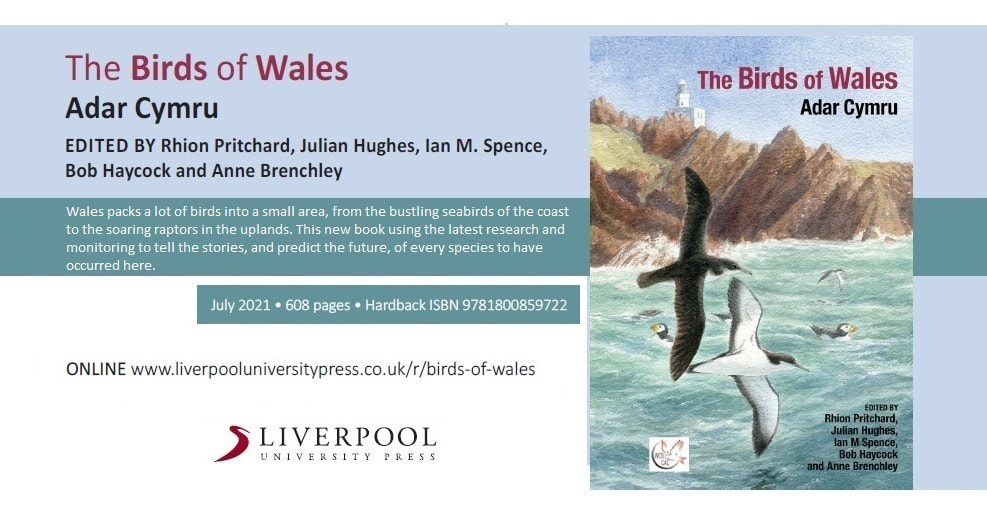From its long coastline that resounds to the calls of breeding seabirds in summer, to open moorland that holds some of the most southerly Curlews and Black Grouse in Britain, Wales packs a lot of birds into a small area. Now, the stories of the nation’s birds are told in The Birds of Wales.
Edited by volunteers from the Welsh Ornithological Society, the new avifauna pools knowledge of all 451 wild bird species recorded in Wales and more than 100 non-native species recorded ‘in the wild’. The accounts for each species draw on the latest research and expertise from those who have studied the birds in Wales, and showcase images by some of our best bird photographers.
The Birds of Wales traces the earliest evidence, such as Barnacle Geese that bred in Pembrokeshire before the last Ice Age and the footprints of Common Crane preserved in Severn Estuary mud around 7,000 years ago. The authors have also explored the historic record in English, Welsh and Latin. Gerald of Wales documented what is probably the earliest bird identification dispute in 1188, an argument about whether a bird heard near Caernarfon was an oriole or a woodpecker.
It describes, for the first time, the history of bird recording and conservation in Wales and the environmental context that has resulted in big changes for our birds. It also charts the patterns of visiting migrants to the bird observatories on Skokholm and Bardsey, and the efforts of generations of ringers that have revealed much about bird movements and life-cycles. It will have an essential place on the bookshelf of everyone with an interest in birds in Wales, and should be on the desk or in the rucksack of everyone who influences what happens to the nation’s land and seas.
The Birds of Wales was published, in English, by Liverpool University Press in July 2021, price £45. 608 pages. Hardback. It can be ordered from liverpooluniversitypress.co.uk/r/birds-of-wales.
For a talk about the book and some of the stories that it contains, watch on YouTube a talk presented to Bangor Bird Group in autumn 2021.
Edited by volunteers from the Welsh Ornithological Society, the new avifauna pools knowledge of all 451 wild bird species recorded in Wales and more than 100 non-native species recorded ‘in the wild’. The accounts for each species draw on the latest research and expertise from those who have studied the birds in Wales, and showcase images by some of our best bird photographers.
The Birds of Wales traces the earliest evidence, such as Barnacle Geese that bred in Pembrokeshire before the last Ice Age and the footprints of Common Crane preserved in Severn Estuary mud around 7,000 years ago. The authors have also explored the historic record in English, Welsh and Latin. Gerald of Wales documented what is probably the earliest bird identification dispute in 1188, an argument about whether a bird heard near Caernarfon was an oriole or a woodpecker.
It describes, for the first time, the history of bird recording and conservation in Wales and the environmental context that has resulted in big changes for our birds. It also charts the patterns of visiting migrants to the bird observatories on Skokholm and Bardsey, and the efforts of generations of ringers that have revealed much about bird movements and life-cycles. It will have an essential place on the bookshelf of everyone with an interest in birds in Wales, and should be on the desk or in the rucksack of everyone who influences what happens to the nation’s land and seas.
The Birds of Wales was published, in English, by Liverpool University Press in July 2021, price £45. 608 pages. Hardback. It can be ordered from liverpooluniversitypress.co.uk/r/birds-of-wales.
For a talk about the book and some of the stories that it contains, watch on YouTube a talk presented to Bangor Bird Group in autumn 2021.

